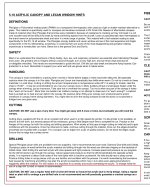bkc3921
Well Known Member
Getting ready to drill the #40 holes into the roll bar for to mount the rear window...I will use a plexi bit to get through the window itself, but you need to drill into the roll bar as well.
Will the plexi bit handle this rather substantial aluminum in the bar itself, or will it destroy the bit..? When you are doing the canopy sides, a plexi bit will easily go through the frame braces (true)...but this roll bar is much heavier. Did anyone have a problem with this...? If so, I would be happy to take a suggestion.
Also, #40 plexi bits are not the easiest to find... Apparently, Spruce doesn't sell #40. A link to a good source would be appreciated....
Happy Building to all!
Will the plexi bit handle this rather substantial aluminum in the bar itself, or will it destroy the bit..? When you are doing the canopy sides, a plexi bit will easily go through the frame braces (true)...but this roll bar is much heavier. Did anyone have a problem with this...? If so, I would be happy to take a suggestion.
Also, #40 plexi bits are not the easiest to find... Apparently, Spruce doesn't sell #40. A link to a good source would be appreciated....
Happy Building to all!





